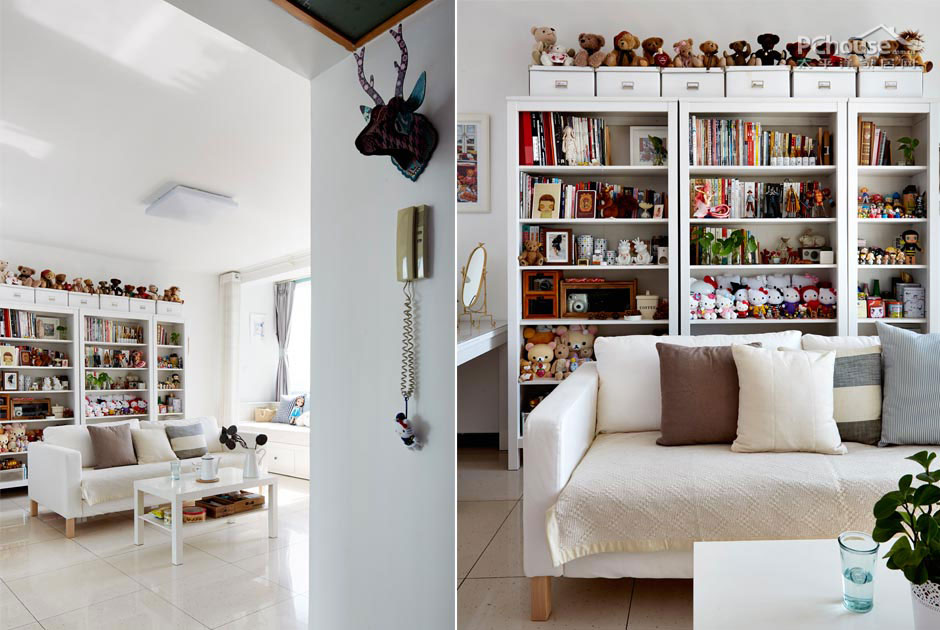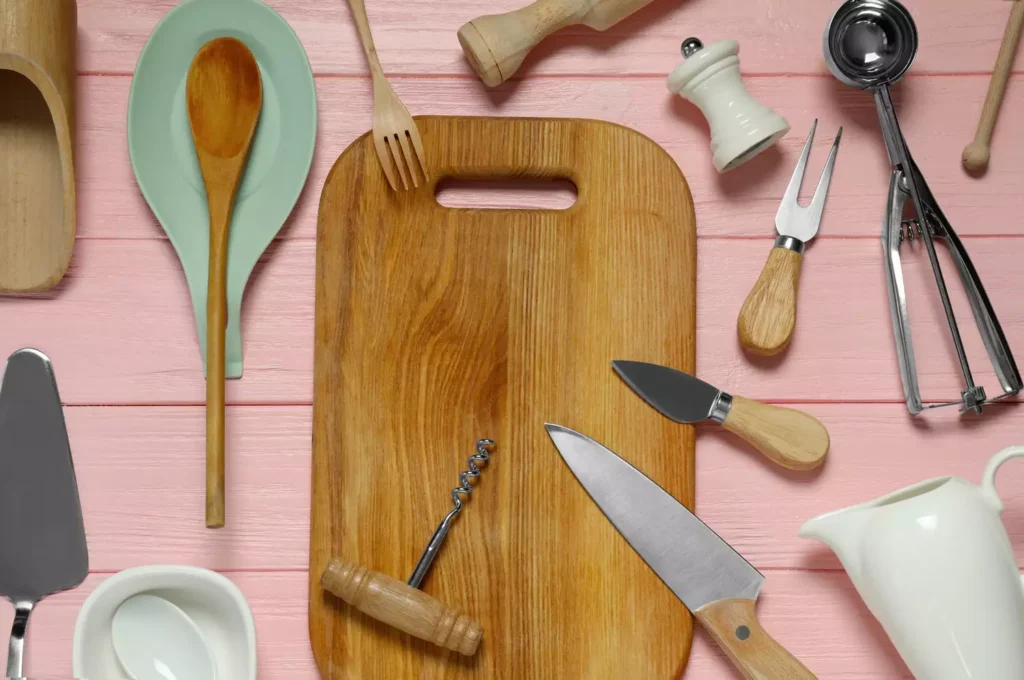Throughout my life, I’ve always shared a bathroom, from childhood with my sister, to college dorms, and now with my family of four. Storage has always been a challenge, whether it’s for hair tools or bath toys. According to Kelley Jonkoff, a professional organizer and founder of Unfolde in Raleigh, North Carolina, keeping the bathroom organized can have both visual and mental benefits. She says, “The bathroom is the place where we prepare ourselves for each day, and pull ourselves out of each day. It’s a physical place for taking stock—so it can be a negative place if it gets too cluttered or messy.”
To determine your storage needs, Jonkoff suggests starting by taking an inventory of what you have. “The first step is to edit and minimize,” she advises. Limit items in the bathroom to only those you use daily; store extra towels or soap bars in a nearby closet if possible. Discard items you don’t use, as keeping them can create clutter and stress. Jonkoff encourages treating your bathroom like a spa, a serene place for self-care.
For those with limited space, consider if there are other logical spaces in your home for daily use items. For instance, Jonkoff points out that while many people keep vitamins and supplements in the bathroom, it might make more sense to store them in the kitchen, near where you make your coffee.
Once you know what you want to store, there are several tools to help organize your skincare, makeup, hair products, towels, and other bath supplies. These clever bathroom storage ideas can streamline your routine and keep your items under control.
17 Bathroom Storage Ideas to Keep Your Space Organized:
01. Adjust the Shelves in Your Medicine Cabinet: Jonkoff recommends adjusting the shelves in your medicine cabinet to fit your specific needs. “This will make it easier to use the space more efficiently,” she says. For example, move shelves higher for lotions or hair products, or keep them shorter for jars, creams, or medicines. “Since this is the easiest space to access, try to fit most of your daily-use items here,” Jonkoff advises.
02. Use Bins Inside Your Medicine Cabinets: After adjusting the shelves, take organization further by using narrow bins for items like makeup brushes, toothbrushes, tweezers, or small ointments.
Jonkoff likes using small, clear bins so it’s easy to find what you’re looking for.
03of 17 Add a Single Shelf to the Wall Near Your Sink. Shelves are great, especially for things you’re using on the regular. A lot of Jonkoff’s clients make use of the wall perpendicular to the sink for daily skincare, toothbrushes and toothpaste, medicines, or other frequently used items. This setup is especially helpful if you have any executive function or neurodivergence challenges, because the things you need are front and center. A simple picture ledge or spice rack might be all that you need. Just one caveat: just because you use something frequently, doesn’t mean you want to look at it all the time (see: toenail trimmers, Tums). In these instances, display the beautiful skincare instead. 7 ADHD-Friendly Ways to Organize Your Fridge 04of 17 Keep Your Most-Used Items in Arm’s Reach. If you don’t have a medicine cabinet (or if it’s already filling up), consider installing narrow shelving on an unobstructed wall to keep your most used items handy. Shelves with a lip or rail can be especially useful to make sure that items that could get a little wet don’t slide off. Another option is a shallow cabinet with doors, just deep enough for makeup and skincare essentials. 05of 17 Add Freestanding Storage Over the Toilet. If you can’t drill into your walls, consider a freestanding shelving over-the-toilet storage unit that tucks up and behind the toilet. A unit with clean lines and a slim frame offers a modern take. 06of 17 Use Shelf Risers Inside Vanity Cabinets. A lot of people don’t use all the vertical space in their under-sink cabinets. Here, Jonkoff recommends shelf risers to make better use of the full height of the interior space. Jonkoff likes to use this area for items that are used less frequently, because bending and reaching can be less comfortable if you do it multiple times a day. That’s where she puts things like a waxing kit or nail polish. 07of 17 Use Bins Inside Vanities. Above or underneath the shelf risers, use bins to gather smaller items, so it’s easy to pull them out and find what’s inside. Jonkoff likes to lay hair products on their sides and store them in bins, since they are so tall they tend to tip over. She prefers stackable clear bins with pull-out drawers to offer maximum access to the products inside. 08of 17 Compartmentalize Vanity Drawers. People tend to cram things into drawers, which makes them hard to find. So here, use small bins or dividers to make more efficient use of the space and fit more inside. You want to, as best as possible, fill the space. Jonkoff notes that she uses graph paper to map out the interiors of the drawers and figure out how to configure them. Jonkoff especially likes shallow drawer organizers with rubber feet that keep them from slipping around. You can also reuse small boxes you already have as organizers. Apple product boxes are the best, she says.Store Makeup in Clear Bins: For deeper drawers, utilize taller clear bins to keep small items like makeup and serums vertically organized and grouped together. Jonkoff recommends Home Edit bins, especially when paired with matching bin dividers, for in-drawer makeup storage. The small size allows for easy access and organization during makeup application and storage. Use a Shelf Liner: While bins are great, it’s rare to find a perfect fit for drawer interiors.
Jonkoff suggests lining drawer bottoms with a shelf liner that has a slight tack to prevent items from rolling around. A plastic liner works well and is resistant to water damage. Use Over-the-Door Baskets for Hair Tools: Inside large open vanities, Jonkoff prefers over-the-door baskets for bulky items like hair dryers that don’t stack easily or fit into drawers. These baskets keep cords neat and organized. Add Skinny Rolling Shelves: For limited interior storage space, consider a narrow rolling shelving unit that can be positioned between a vanity and toilet or under a pedestal sink. This provides additional storage for items such as lotion, makeup, or hair products. Jonkoff also recommends tall, clear containers for smaller items like cotton balls or makeup remover pads to maintain a clutter-free space. Use Vertical Shower Caddies: The tub or shower area can become cluttered quickly, so Jonkoff advises being selective about the products kept there. She suggests keeping only the products that are actually used and storing backups and occasional-use items like hair treatments outside the shower. For daily-use items, Jonkoff likes to use over-the-shower caddies or corner tension pole caddies to keep them organized. Hook it Up: Jonkoff prefers suction hooks or Command bath hooks inside the shower stall for strategically hanging items like loofahs or pumice stones that need to dry between uses. Buy Smaller Items: While large-sized shampoo and body wash may seem like a good deal, Jonkoff warns that they might not fit well in shower stalls. She suggests being realistic about product usage and savings compared to the clutter they may cause in the bathing area. Use the Back of Your Doors: On wooden doors, Jonkoff recommends installing simple two-prong metal hooks in the same finish as other bath hardware to create space for hanging towels and robes.To maximize kitchen accessibility and efficiency, consider hanging items within reach. If children are using the space, ensure items are hung low enough for them to access. For shared spaces, use a combination of high and low hooks to accommodate both adults and children.
For hollow-core doors, heavy-duty adhesive hooks are an effective solution. Outsource backup items to nearby closets or storage spaces to store additional bath towels and bulk items. Utilizing a narrow cabinet just outside the bathroom door can also provide more space when inside the bathroom. Was this page helpful? Thanks for your feedback! Tell us why! Other Submit

